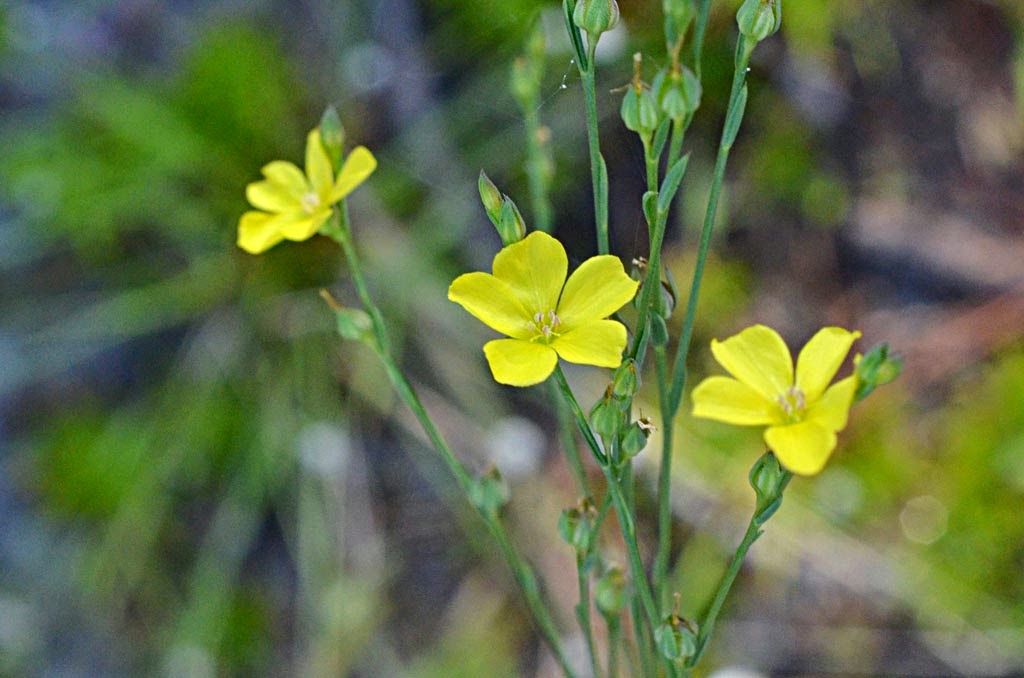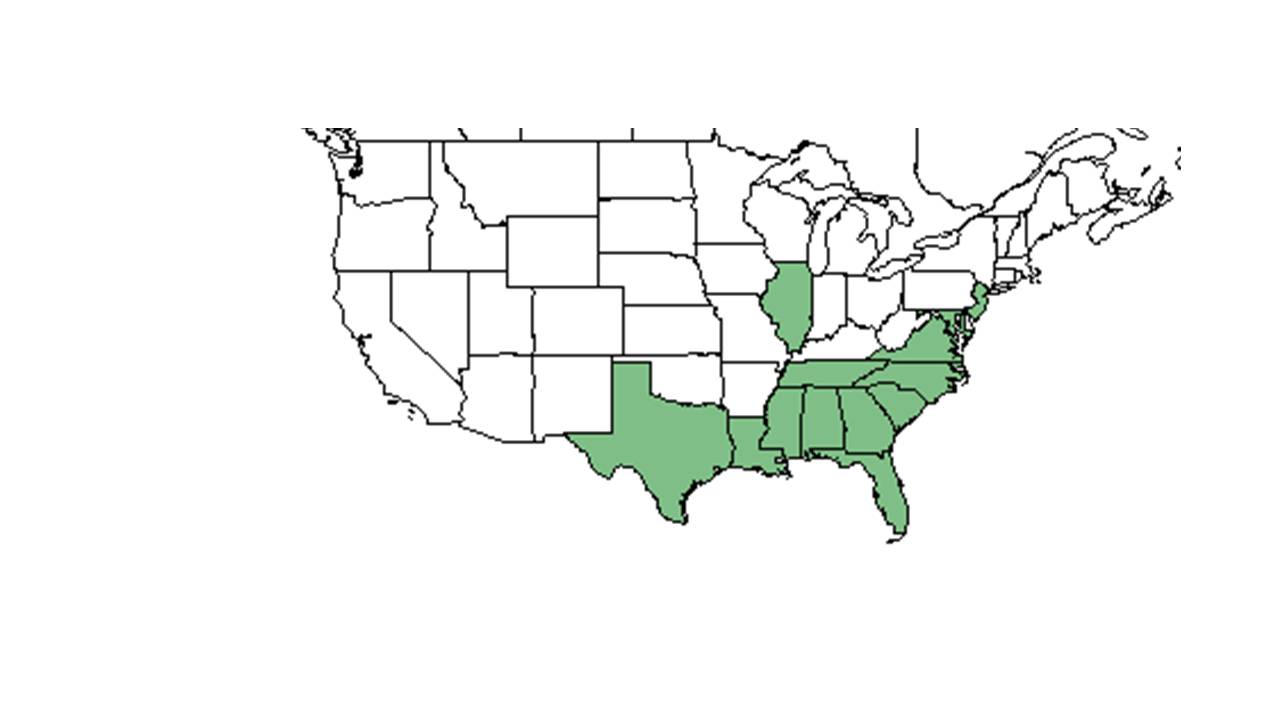Difference between revisions of "Linum floridanum"
(→Ecology) |
|||
| Line 48: | Line 48: | ||
===Fire ecology=== <!--Fire tolerance, fire dependence, adaptive fire responses--> | ===Fire ecology=== <!--Fire tolerance, fire dependence, adaptive fire responses--> | ||
This species occurs in areas that are annually burned.<ref name="FSU Herbarium"/> In an open wet pine savanna in Mississippi, the highest densities of flowering stalks for ''L. floridanum'' were observed one year after fire.<ref name=hin> Hinman, S. E. and J. S. Brewer (2007). "Responses of two frequently-burned wet pine savannas to an extended period without fire." Journal of the Torrey Botanical Society 134: 512-526. </ref> | This species occurs in areas that are annually burned.<ref name="FSU Herbarium"/> In an open wet pine savanna in Mississippi, the highest densities of flowering stalks for ''L. floridanum'' were observed one year after fire.<ref name=hin> Hinman, S. E. and J. S. Brewer (2007). "Responses of two frequently-burned wet pine savannas to an extended period without fire." Journal of the Torrey Botanical Society 134: 512-526. </ref> | ||
| − | <!--===Pollination | + | <!--===Pollination and use by animals===--> |
| − | |||
<!--===Diseases and parasites===--> | <!--===Diseases and parasites===--> | ||
Revision as of 17:33, 14 June 2021
| Linum floridanum | |
|---|---|

| |
| Photo by Wayne Matchett, SpaceCoastWildflowers.com | |
| Scientific classification | |
| Kingdom: | Plantae |
| Division: | Magnoliophyta - Flowering plants |
| Class: | Magnoliopsida – Dicotyledons |
| Order: | Linales |
| Family: | Linaceae |
| Genus: | Linum |
| Species: | L. floridanum |
| Binomial name | |
| Linum floridanum (Planch.) Trel. | |

| |
| Natural range of Linum floridanum from USDA NRCS Plants Database. | |
Common name: Florida yellow flax[1]
Contents
Taxonomic notes
Synonyms: Cathartolinum floridanum (Planchon) Small; C. macrosepalum Small; L. virginianum var. floridanum Planchon.[1]
Varieties: Linum floridanum (Planchon) Trelease var. chrysocarpum; Linum floridanum (Planchon) Trelease var. floridanum
Description
"Annual, biennial, or short-lived perennial herbs with 1-several strict stems from a crown, usually branched above. Leaves cauline, opposite or alternate, entire, acute to acuminate, sessile, exstipulate. Inflorescence a panicle of racemes or cymes. Flower perfect, actinomorphic, pedicellate; sepals 5, separate or basally adnate; pistil 5-carpellate, styles 5, each carpel divided at maturity, the pistil then appearing 10-carpellate. Seeds lustrous brown, obovoid to ellipsoid."[2]
"Perennial with 1-several stems 3-8 dm tall, from a crown. Leaves mostly alternate, lowest often opposite, narrowly elliptic to linear, 0.8-2.5 cm long, 1-7 mm wide, acute. Pedicels 1-3 mm long. Sepals lanceolate, 2-3 mm long, acute to acuminate, entire or glandular serrate; petals yellow, 4-8 mm long. Capsule ovoid or oblate, 1.3-3 mm long. Seeds 1-1.3 mm long."[2]
"Leaves 0.8-5 mm wide. Branches of inflorescence ascending. Inner sepals are densely glandular serrulate. Capsule ovoid, 2-3 mm long."[2]
Distribution
L. floridanum var. chrysocarpum ranges from southeast North Carolina, south to southern Florida, and west to southern Missippii. L. floridanum var. floridanum has a similar range, except it is additionally located in Lousianna and the West Indies.[1]
Ecology
Habitat
This species can be found in open wiregrass seepage savannas, longleaf pine forests, and disturbed areas such as ditches.[3] The soils have been observed to be moist and/or dry loamy sands within well-drained uplands.[3] Associated species include Pinus palutris, Aristida stricta, Sarracenia, and Harperocallis.[3]
Phenology
L. floridanum flowers from June through October.[1]
Seed dispersal
This species is thought to be dispersed by gravity.[4]
Fire ecology
This species occurs in areas that are annually burned.[3] In an open wet pine savanna in Mississippi, the highest densities of flowering stalks for L. floridanum were observed one year after fire.[5]
Conservation, cultivation, and restoration
Cultural use
Photo Gallery
References and notes
- ↑ 1.0 1.1 1.2 1.3 Weakley, A.S. 2015. Flora of the southern and mid-atlantic states. Working Draft of 21 May 2015. University of North Carolina at Chapel Hill, Chapel Hill, North Carolina.
- ↑ 2.0 2.1 2.2 Radford, Albert E., Harry E. Ahles, and C. Ritchie Bell. Manual of the Vascular Flora of the Carolinas. 1964, 1968. The University of North Carolina Press. 645-6. Print.
- ↑ 3.0 3.1 3.2 3.3 Florida State University Robert K. Godfrey Herbarium database. URL: http://herbarium.bio.fsu.edu. Last accessed: June 2014. Collectors: Loran C. Anderson, M. Davis, Robert K. Godfrey, R. Komarek, Cecil R. Slaughter. States and Counties: Florida: Baker, Liberty, and Wakulla. Georgia: Thomas.
- ↑ Kirkman, L. Katherine. Unpublished database of seed dispersal mode of plants found in Coastal Plain longleaf pine-grasslands of the Jones Ecological Research Center, Georgia.
- ↑ Hinman, S. E. and J. S. Brewer (2007). "Responses of two frequently-burned wet pine savannas to an extended period without fire." Journal of the Torrey Botanical Society 134: 512-526.